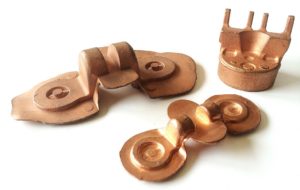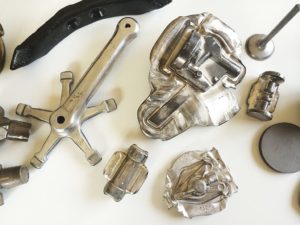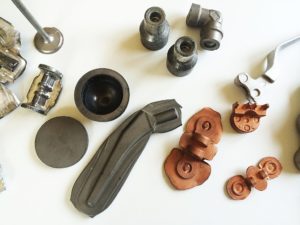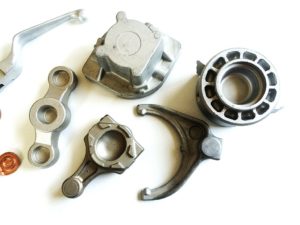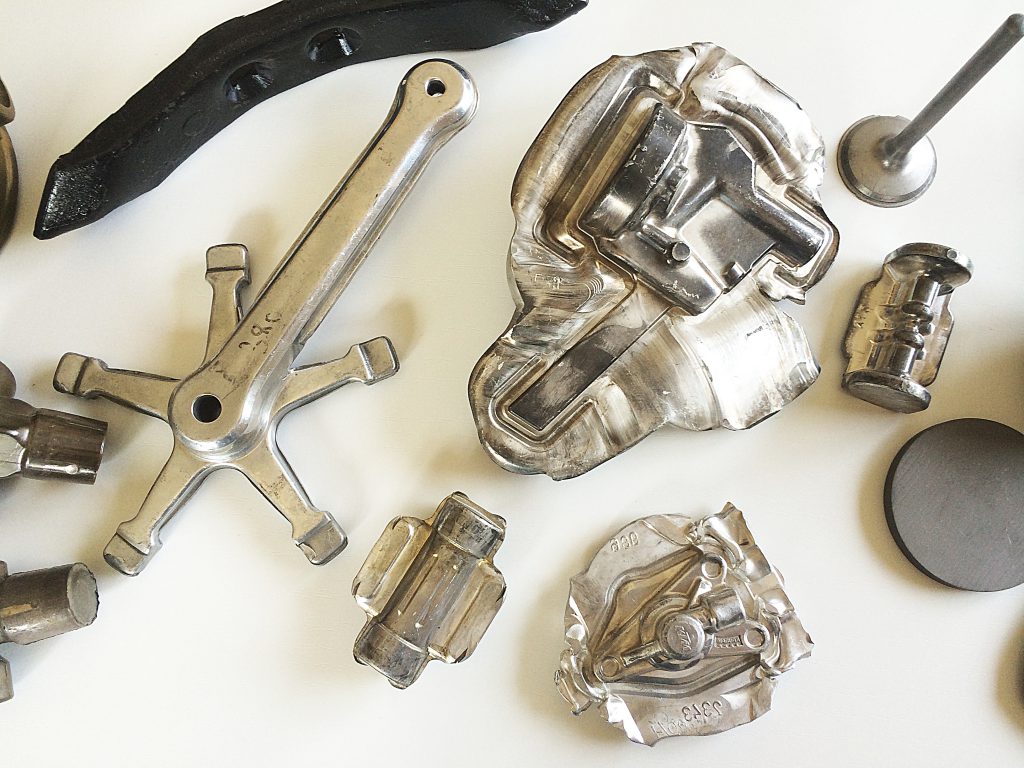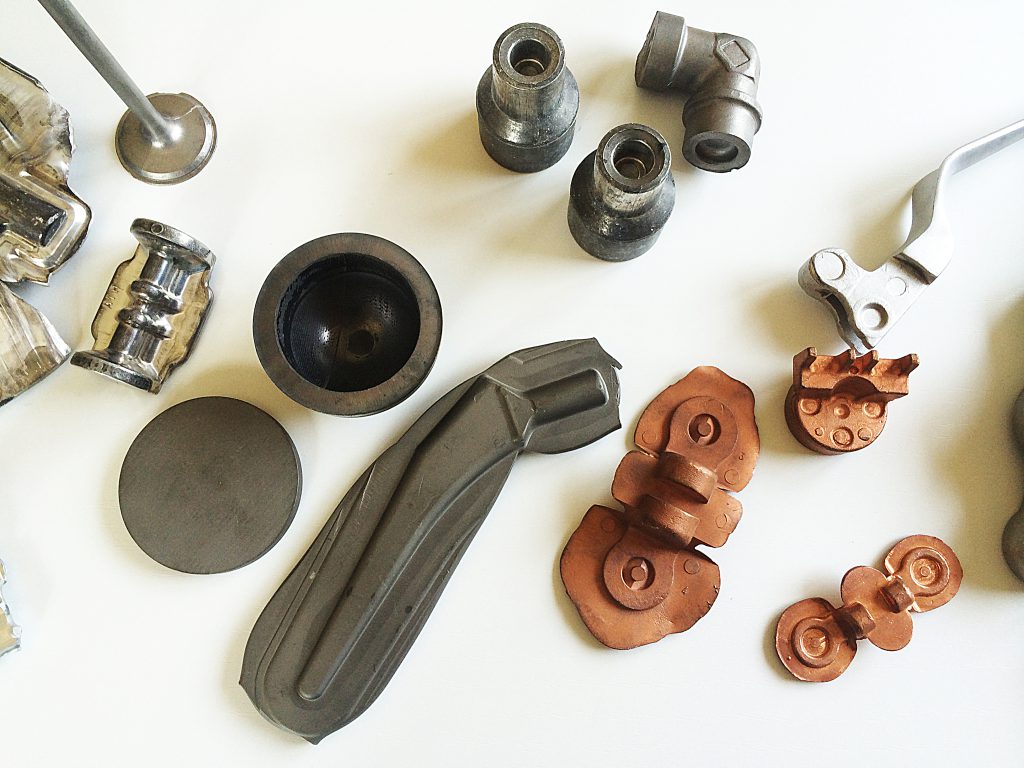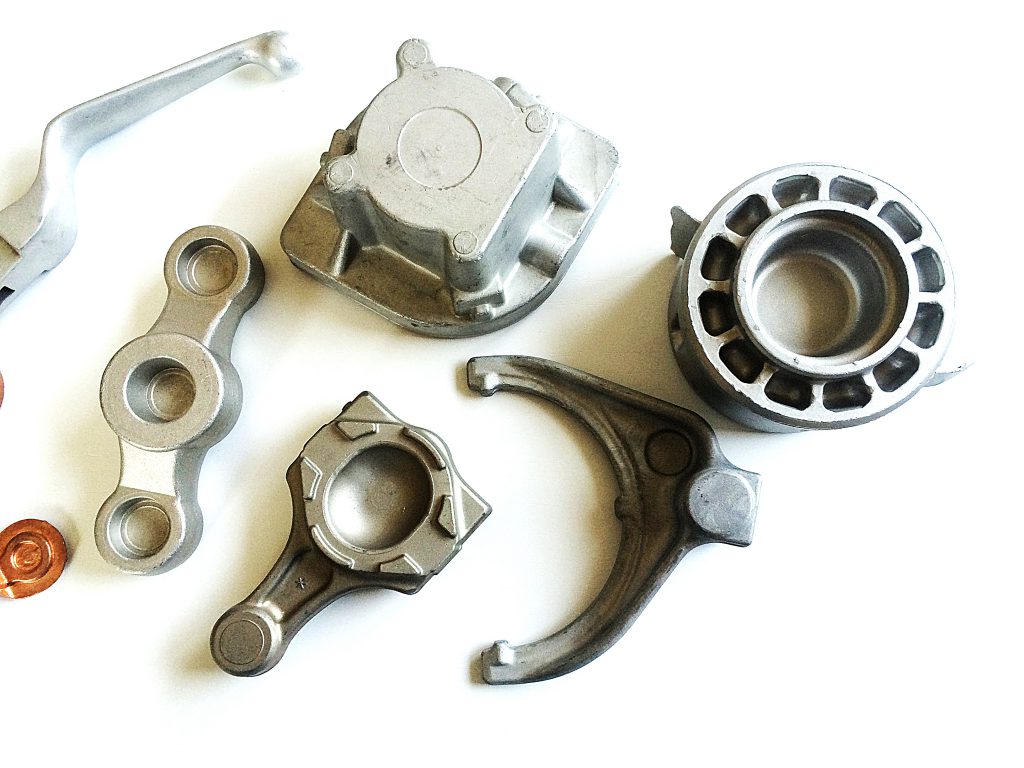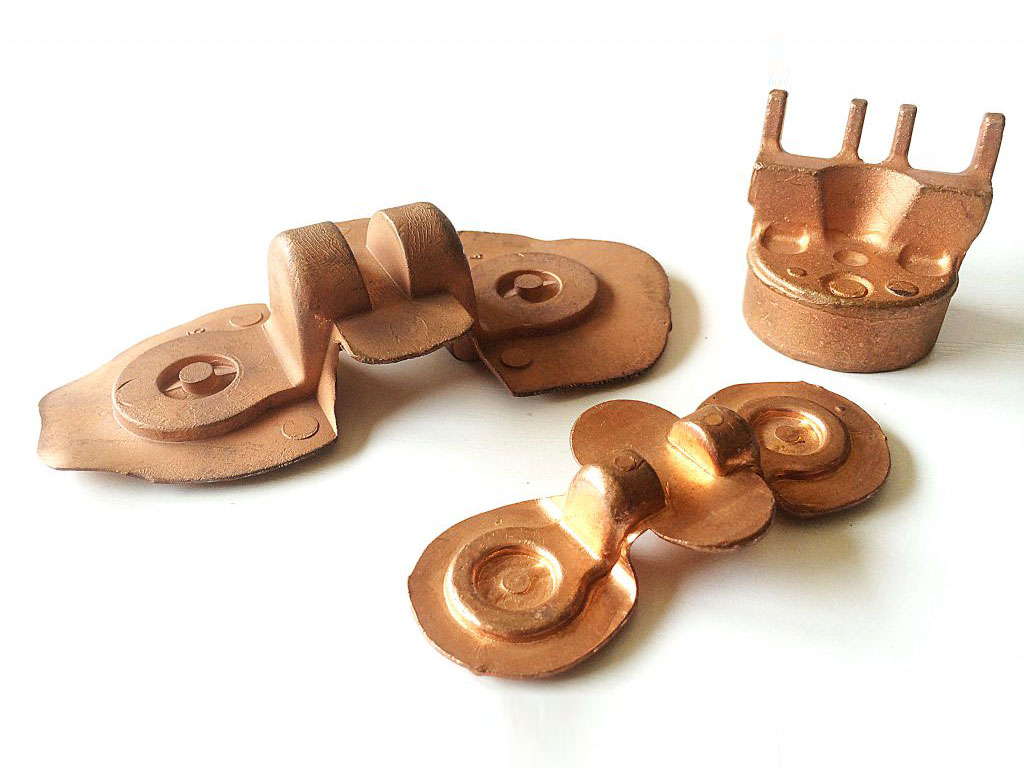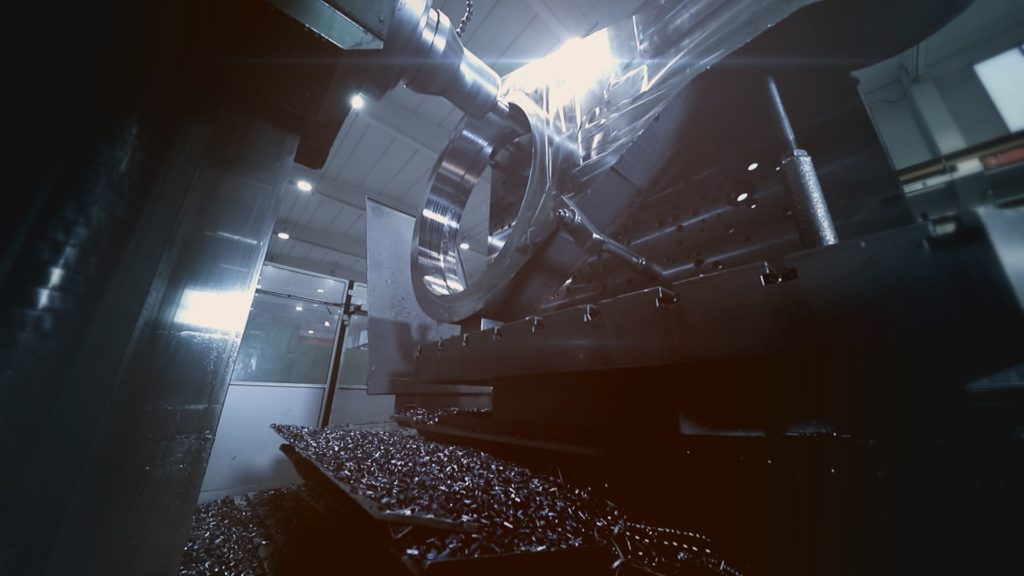
Metals hot forging process
Metals forging: hot or cold forging?
The forging by means of presses of metals commonly used for the industrial production, such as aluminum and brass, can happen in two ways.
- The first one is the cold coining, carried out, for example, on a piece that already has its own shape and that is forged through the press in such a way to calibrate it and to compact it. The cold coining is suitable, above all, for small size parts and for great production batches, such as screws. The most suitable machines for this type of process are our screw presses.
- The metals hot forging is different from the cold one because it allows to obtain high quality pieces by means of an important deformation of the starting material. With the deformation of brass, copper, aluminum by means of hot forging presses it is possible, indeed, to produce particular shapes, having very complicated structures as well. In order to achieve this forging, Mecolpress proposes, beyond the already mentioned screw presses, also the mechanical and hydraulic presses according to the different production necessities expressed by the customer.
Mechanical and hydraulic presses for the hot forging
The mechanical press can hot forge even complicated pieces. At the end of the process, the forged parts can often have some remaining flash that can be eliminated by means of a trimming machine, machinery that is part of the products range that we offer. The eccentric mechanical press with continuous cycle is recommended for the customers who have high production necessities, while the hydraulic press is more advisable for parts having very complicated shapes and that would require, otherwise, the usage of a lot of material. This type of press permits, indeed, a saving of the input material, so offering to the forger a good margin on the product cost. Moreover, by forging the parts by means of hydraulic hot forging presses, at the end of the productive cycle the parts range that can be produced without flash is much wider, thanks to a progressive and programmable application of the forces. Another characteristic of this type of presses is the flexibility, given by the wide number of available functions.
Hot forging line
For the metals forging a furnace that can be electric (induction) or gas furnace and a press are needed. This is the base productive line for the aluminum, brass, titanium and steel processing; line that can be upstream completed with a sawing machine that cuts the metal bar in billets and with a graphitizing machine, where the billets are treated with the graphite before these are inserted in the furnace, so that these absorb better the heat and that are kept lubricated. The graphitizing, that offers remarkable advantages from a productive point of view, such as a minor gas consumption in the furnace and a superior durability of the dies, is just fitting for some specific production typologies. It is not recommended, for example, for the production of parts that once forged, must be chrome plated or exposed to further particular treatments. Our sales department is at the disposal of our customers for suggesting the best forging line composition according to the product and to application field.
Hot forged metals
The customer’s choice for a specific press for his own productive cycle is based on the material typology used by the forger and on the shapes to achieve.
For the brass forging the hydraulic press is more fitting than the screw press, that is better for the forging of titanium and steel. The eccentric mechanical presses are used for all the metals, even for the copper hot forging. Our sales department is at disposal of our customers for offering the best technical solution for every specific productive situation.
For further information about hot forging machineries, please write us at sales@mecolpress.com
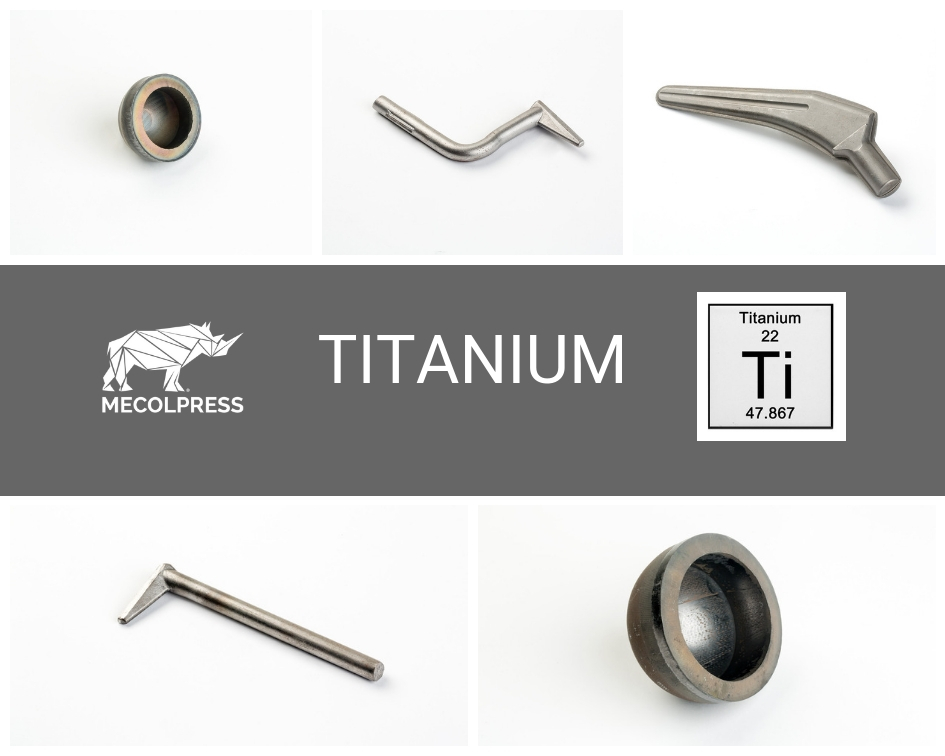
Titanium and its features
In addition to be the fourth metal for its great abundance, titanium is the ninth element in order of industrial usage. It is preceded – obviously – by aluminum, iron and magnesium.
With atomic weight of 47,88 it is light and robust: its features combine high resistance, tenacity, rigidity, low density and a good resistance to corrosion.
Its low density (about 60% of iron density) can be strengthened through alloy elements and deformation processes. It is non-magnetic and it has a good characteristic of thermal exchange. Its coefficient of thermal dilation is a little bit lower than that of the steels and it is less than half of that of aluminum. Further useful trait is the high melting point of 3135° F (1725 ° C), about 400° C higher than that of the steel and about 2000 ° F higher than that of aluminum.
Titanium can be passivated, and it resists to the attacks of acids and base better than the stainless steel. The excellent resistance to corrosion and biocompatibility, combined with mechanical resistance, make it suitable for the chemical and petrochemical, sea environment and biomedical applications.
Regarding the electrical conductivity, the titanium’s one is 3,1% of the coppers one. So, titanium is not a good electrical conductor and it offers a high electrical resistance.
For a more complete vision, here you can find a table with the summarized titanium properties:
| Main titanium’s features | |
| Specific weight | 4.5 g/cm3 |
| Density | 4500 Kg/m3 |
| Melting temperature | 1680 °C |
| Thermical conductivity | 17 W/m°C |
| Linear thermal expansion coefficient (20-100 °C) | 8.9*10-6 /°C |
| Electrical conductivity | 3% IACS (copper 100%) |
From pure titanium to the alloys
The commercially pure titanium can be classified in 4 grades, that are essentially different for:
- resistance;
- usability.
In a nutshell, when the grade raises, the first increases and the second decreases.
The titanium alloys are divided into:
- Commercially pure titanium (CO): It’s the grouping that contains the highest proportion of titanium. Typical features are the high tendency to corrosion and mechanical features of medium-low value.
- α alloys: they present good weldability and maintenance of the mechanical characteristics also at high operating temperature, thanks to the generally high content of aluminum. The usage in components particularly solicited is impeded by the fact that these cannot be submitted to any thermal treatment.
- b alloys: they guarantee the best mechanical features. These have very restricted or null weldability, these are used in the constructions of bolts and springs and in strongly solicited parts.
- α+b alloys: in the group there are the most used alloys with elevated mechanical characteristics and largely used in the production of airplane’s components.
The titanium alloys, that are rather numerous, are classified in grades.
In the traditional manufacture, as also in the 3D printing, the following types of alloys are especially used:
- the Ti6Al4V (grade 5)
- the Ti6Al4V ELI (grade 23).
Among all titanium alloys, the grade 5 is the most used: engine parts, structural parts of airplane and automotive, fastening aerospace elements, and sport equipment of high quality.
The Ti 6Al4V ELI, or simply the grade 23, is the purer version of grade 5. Thanks to its biocompatibility, to its good resistance to stress and to the low module, it can be used in dental and health care sector.
Hot and cold forging of titanium
Hot or cold forged, titanium consents to create special processing of excellent quality.
In particular, the hot process guarantees significant advantages such as:
- Increase of resistance: the longitudinal continuity, even in the critical transit area between head and stem, is kept unchanged. The raw material can be shaped, by avoiding the cuts typical of the traditional turning works. The phenomenon of detachment between head and stem decreases and it is frequent in the wrought that are submitted to excessive stress. The absence of cut fibers increases the resistance.
- Saving of raw material; optimization of costs. Swarf are not created during the process: the raw material is not wasted and the price of the product decreases.
Advantages and disadvantages of titanium usage
Advantages:
- low specific weight
- Hardness
- Resistance to corrosion
- low thermal conductivity
- Radiolucency
- Biochemical inert
- Biotolerance
- Not toxicity
- Absence of taste
- Resistance to chewing
Disadvantages:
- Not enough precise melting
- Formation of a layer of oxide on the surfaces
- Detachments of ceramic covering
- Inner porosities
- Surface porosity that allow higher accumulations of plaque than the traditional alloys.
The brief overview of information about a such promising metal (for booming sectors like health care, for example) like titanium, shows how all the above mentioned disadvantages can appear essentially just in case of melting, and so these are totally avoided by the hot forging with appropriate furnace or press, alongside an expert consultant that can address the choice of the proper machine, and suggest the working modalities and of course guarantee an impeccable customer service that avoids criticalities and tensions at the moment of operativity starting.
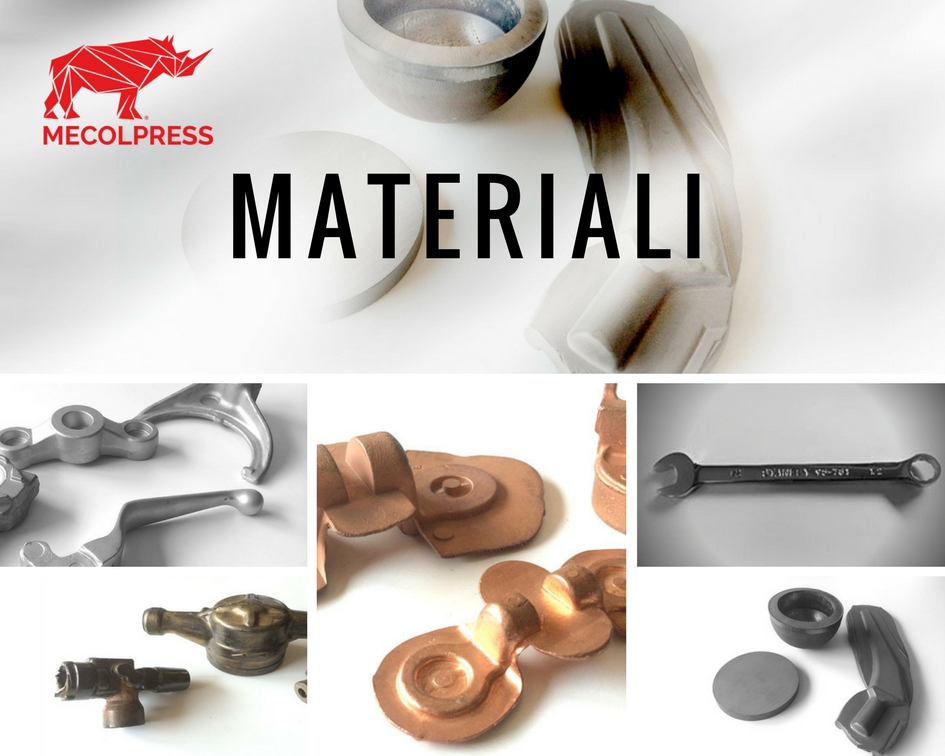
Materials Forged
Mecolpress is leader in the production of industrial presses for the hot forging of materials like:
brass, titanium, aluminium, copper and steel.
The competence of the Research and Development department of Mecolpress support our customers to obtain several goals:
- To be informed about the methodologies to optimize the production thanks to the hot forging of the parts in an efficient way, without the need of subsequent operations like trimming the flash or similar, and also in an effective way, producing a piece that is robust and perfect as the shape to which is inspired;
- To learn which are the most suitable materials for which applications and determine in which conditions the properties of the materials itself are best performing;
- To adapt the best production technics to the need of specific industry sectors, to particular countries prescriptions, according to the local laws and styles.
Mecolpress is therefore a competence centre for the hot forging of material on international level, and this also thanks to the global success that the company has reached in its history.

